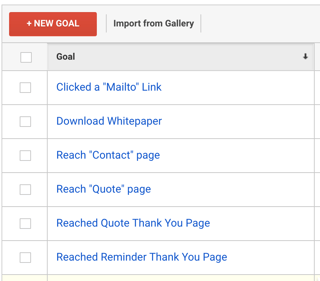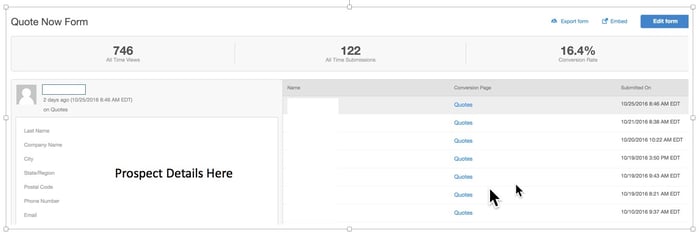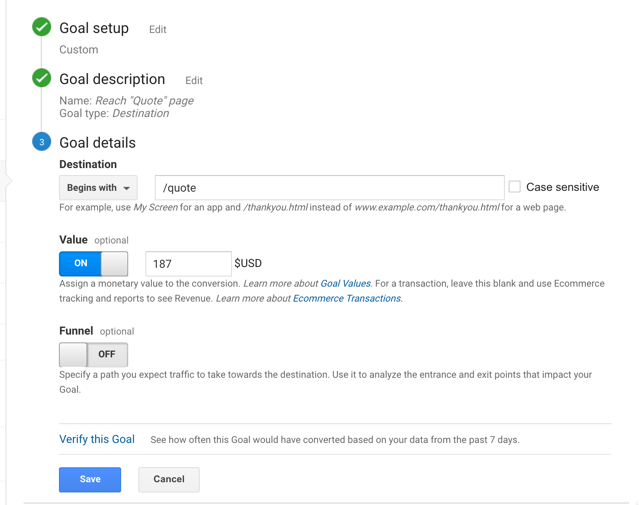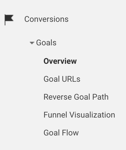Does this sound familiar?
Your business invests money in online marketing, but you aren't sure if that marketing generates revenue. Everyone says clicks mean success, but your business needs more customers. You want your online marketing to do what it is supposed to and grow your business!
Google Analytics is free and easy to install. It provides a wealth of information about what is hot and what is not on your website pages, BUT how can you determine your Marketing ROI?
Step 1
Set goals in Google Analytics
To set a goal in Google Analytics is pretty easy. Choose events that lead to revenue generation. It can be as simple as Quotes Submitted, particular Downloads or number of Downloads, Specific Time On Page or Watching a Video.

[Click here to see what Google says about setting goals.]

Here are some examples of goals that lead to revenue generation.
It takes an understanding of your business processes to select the correct goals. When selecting goals, it is best practice to involve all those involved in the sales process so proper attribution can be assigned.
Step 2
Add a dollar value to the goals.
Your gut reaction might be to assign Total Sale Value as the monetary value of the goal. The problem is you have not accounted for all costs.
Consider using some percentage of the profit after accounting for all costs. You must reach a consensus agreement with everyone involved in the process. Once you have agreement on the profit piece, the really hard part is next.
You must identify the sales generated by your website. This could include visitor downloads before they called for a quote or Simple Form Submission. This requires meticulous attention to detail in record keeping and the patience to gather historical data. Segregate existing customers from new customers to present a solid case so you don't hear, "They were already a customer so that we would have gotten that business anyway."
We like using HubSpot with our clients as tracking and attribution are simple.
- Collect Data over a Specified Time Range - 30 days is OK, but 90 days is better.
- Reevaluate your goals to ensure you did not miss any "key" revenue-generating activity.
- Determine the monetary value from website-generated revenue based on goal completions.
- Assign Monetary value in Google Analytics.

Now, you will see the results of your efforts in Google Analytics reports.


There are no participation trophies in business.
You need to know if your digital marketing is generating revenue.
Have more questions?







